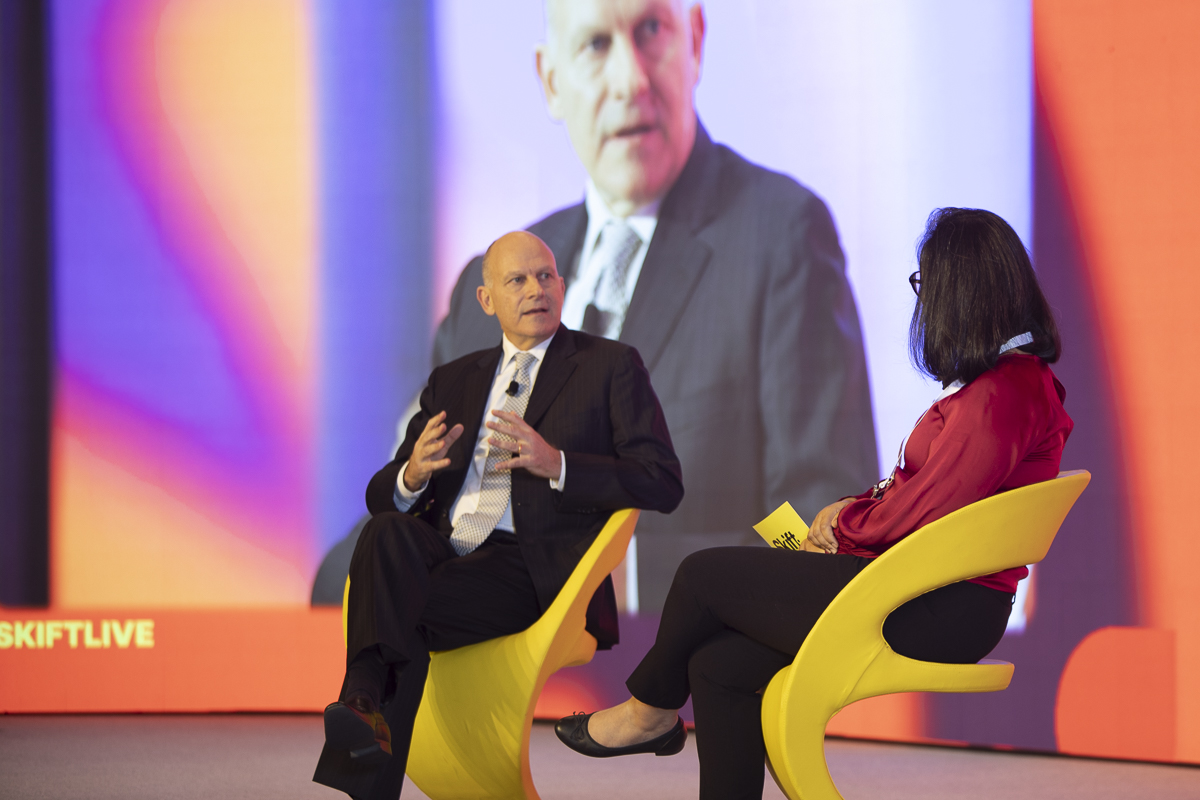Air India CEO Details Carrier’s Ambitions: 'We Are as Much a Startup as We Are a Transformation'

Skift Take
Air India has big ambitions: CEO Campbell Wilson said he wants to restore the carrier into a “top-tier and world-class airline” at the Skift India Summit in Gurugram, India on Wednesday.
Following decades of underinvestment by the Indian government, the carrier has been in the process of a complete makeover ever since it was acquired by the Tata Group in 2022. Air India has launched new business class cabins, new cabin crew uniforms and a new logo. The carrier also placed a record order for 470 aircraft — one of the largest in commercial aviation.
This plan is part of Air India’s strategy, known as “Vihaan.AI,” referring to the Sanskrit word for “dawn of a new era.”
An Overhaul in Operations and Culture
Wilson has often compared the 92-year-old airline to that of a startup because of these major changes. Until recently, he said, Air India had been using antiquated IT for its operations and had an aging workforce.
“I’ve described it as a startup because it really had decades of underinvestment,” Wilson said. “We are as much a startup as we are a transformation,” he continued.
But now Air India is attempting an overhaul. Wilson said Air India has managed to reduce the average age of its workforce from 54 years old to 35 through a major hiring push as some workers retire. The Air India CEO said the airline has hired around 5,000 people in the span of 18 months.
Another hurdle for Air India’s transformation has been its culture. Wilson said the government-owned Air India didn’t necessarily have performance incentives or the right organization to run a multi-hub, international airline.
“In a non-private sector organization, there were no job descriptions,” Wilson said. “There were no metrics of success. There were no rewards for doing well. There were no consequences for not doing well. And so you end up with an organization where there is a malaise.”
Air India Sees Massive Fleet Growth
After Air India placed a blockbuster order for 470 aircraft, Wilson said the airline now has around 550 aircraft available, which is fueling “a rate of growth that is almost unprecedented.”
“We’re taking a new aircraft every six days,” Wilson said.
So far, Air India has taken in 11 new Boeing 777s, three Airbus A350s and around 15 Boeing 737 Maxes. Wilson added that the airline also expects to finish retrofitting its existing widebodies by the end of 2025 or 2026.
More Hubs for Air India?
India is one of the fastest growing travel markets in the world — it is currently the third-largest aviation market after China and the U.S. Wilson said he sees Air India having at least two major hubs in the country. Air India currently has a hub at New Delhi’s Indira Gandhi International Airport.
Wilson described India’s market as one with “many opportunities.”
“There’s not many markets like India in the world,” he said.





